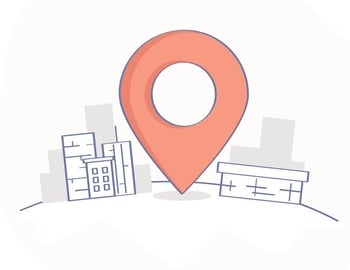GEOTARGETING, GEOFENCING, GEOFRAMING. OH MY!
digital ads, Digital Advertising, Marketing Strategy, Communications, Customer Relationship Management

In the world of digital advertising, one of the most common filters to add to a campaign is geographic targeting. A lot has changed and more options are available when it comes to geotargeting. We thought it might be a good time to stop and share our thoughts on these strategies which can improve your digital marketing campaign.
 Geotargeting
Geotargeting
Unless you are trying to reach the entire United States, almost all digital campaigns have this level of targeting. It can be by state, county, zip code, neighborhood, etc. It allows you to deliver your ad to individuals in the physical area you are trying to reach. Ads can be sent to both mobile devices as well as computers within the target.
It can also be referred to as location-based marketing.
Geofencing
This is the ability to place an imaginary fence around a location to target individuals while they are within the determined boundaries. This generally happens on a much smaller scale such as an exact address. Best used when you are trying to get individuals to take a specific action while they are in the geofenced area. Think getting trade show goers to visit your booth. This type of digital advertising is mobile device based.
Geofencing is also used successfully to target customers while they are within your location. By collecting current customer data, you can re-target via social and display ads to keep your brand and offers top-of-mind.
Geoconquesting
With geoconquesting, you can target your customers while they’re in the vicinity (or in the actual shop) of your competitor. Geoconquesting gives you a way to provide offers, promotions, and discounts to potential customers that may not yet know about your product. It gets your display ads to target customers who are your ideal market—while they’re shopping with your competitor.
When it comes to geoconquesting, tactics , accuracy and offers are critical to success. You need to ensure you are providing compelling offers/information to build brand recognition and a reason for consumers to consider you over their current location.
Geoframing
Similar to geofencing, this is the ability to place an imaginary fence around a location. However, the difference is that you do not advertise to the individuals while they are inside the boundary. Instead, we capture their information and advertise to them at a later date. Normally this takes around four to five weeks to be able to access the information once the event has passed. The good news is you can go back up to a year to pull this information. By the nature of how we get the information this still tends to be predominately a mobile based solution. Best used when you what to target an area where you know your audience is at but know they won’t be on their mobile device while they are there.
All of these options depend on size of potential audience. If a location or event that you are targeting does not provide enough data it will be impossible to effectively carry out the campaign. Something to keep in mind when thinking through your options. Geographic targeting is just one of the many ways to target customers digitally. This is an ever-changing world and we will keep you updated as new opportunities arise.

